MARIANI’S
Virtual Gourmet
January 20,
2019
NEWSLETTER

❖❖❖
IN THIS ISSUE
FESTIVE FOOD IN HONG KONG
By Joanna Pruess
NEW YORK CORNER
FLAMES STEAKHOUSE
By John Mariani
NOTES FROM THE WINE CELLAR
WHAT I'M DRINKING IN JANUARY
By John Mariani
❖❖❖
FESTIVE FOOD IN HONG KONG
By Joanna Pruess
This past October, I spent
six days eating my way through Hong Kong while
attending the 10th Annual HK Wine & Dine
Festival, where guests nibbled and sipped at 450
booths over four days.
While there I tasted a
couple of dishes from locally born entrepreneur
Vivian Shek. Her restaurant, The
Drunken Pot, (left) opened last year in a
chic, artsy space at 8 Observatory Road in Tsim
Sha Tsui. Shek has re-imagined the traditional
hot pot with unique broths, like drunken
chicken, and unconventional dipping components
like clams and chicken in sake-coconut broth.
Hong Kong continues
to be a magnet for global food enthusiasts and
here are some restaurants I enjoyed.
JAMES SUCKLING WINE CENTRAL—Long known in 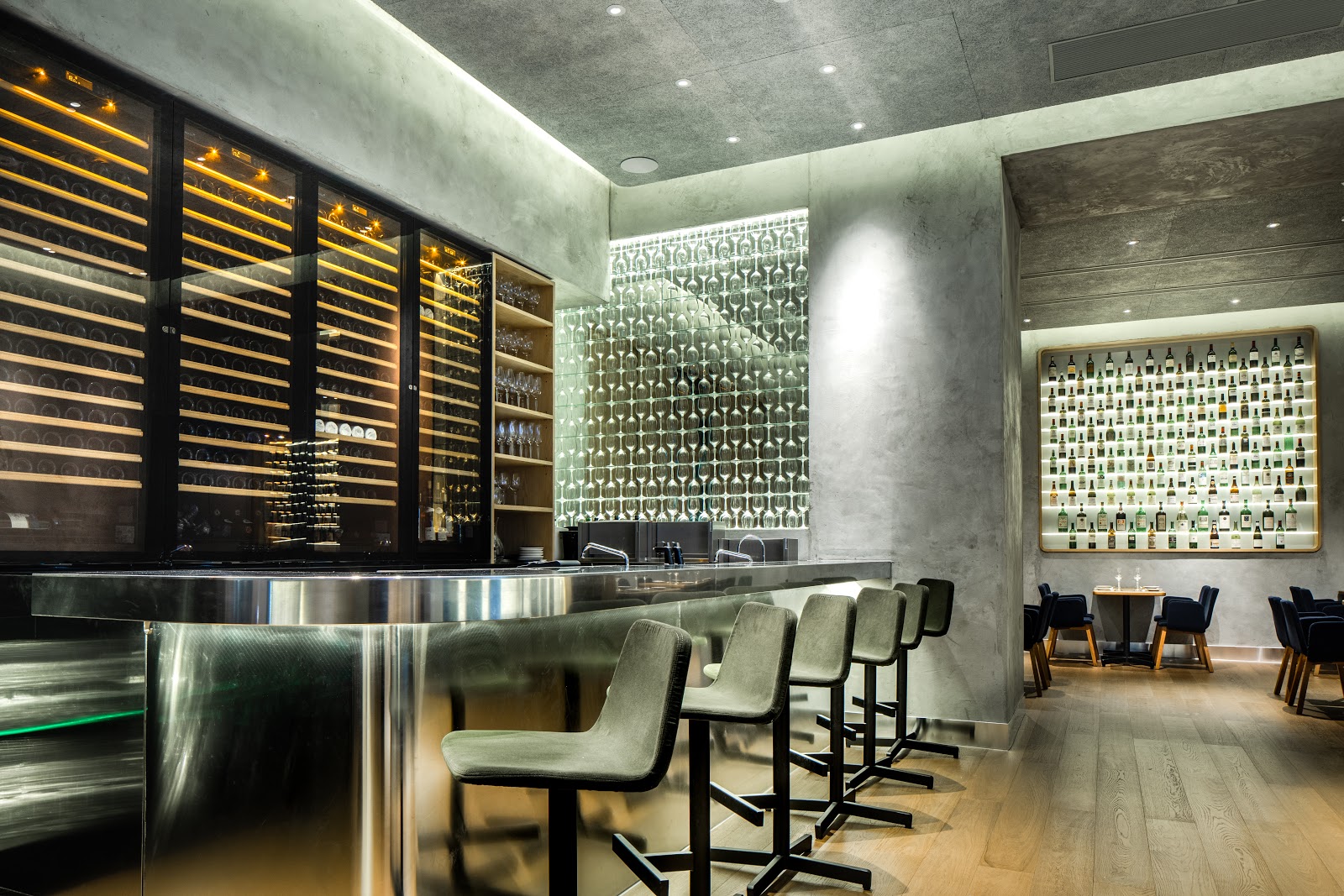 the media for his
expertise in fine wines and for hosting impressive
tasting events, James Suckling recently opened
Wine Central to share his passion with a broader
audience. His new wine bar in Hong Kong’s Soho has
about 500 bottles on his personally curated list,
which is heavily Italian but with a global reach.
There are 300 wines available by the glass and all
scored above 90 points by his rating team.
the media for his
expertise in fine wines and for hosting impressive
tasting events, James Suckling recently opened
Wine Central to share his passion with a broader
audience. His new wine bar in Hong Kong’s Soho has
about 500 bottles on his personally curated list,
which is heavily Italian but with a global reach.
There are 300 wines available by the glass and all
scored above 90 points by his rating team.
Suckling
believes Asian food partners well with some of the
world’s great wines. Chef Ho (left),
formerly at London’s
Jinjuu, demonstrates this with a limited
modern Korean menu featuring refined spins on
dishes like Korean fried chicken; scallops with leeks,
jalapeño and lemon; grilled salmon with saffron,
daenjaeng
(fermented bean paste), seaweed and squid ink;
and pork belly with braised kimchi, golden
beets and apple. For dessert rice donuts were garnished
with chocolate, raspberries and mascarpone. There
are also several platters for sharing. The tastes
are flavorful but subtle.
Suckling’s partners are his Korean wife,
Marie Kim-Suckling, a former wine merchant, and
Italian-Korean restaurateur Francesco Lee. Beyond
an expansive bar and casual lounge, there is a
somewhat glitzy, 80-seat dining room. The
restaurant is on the second
floor of Staunton Suites on Staunton
Street.
James
Suckling Wine Central 22 Staunton St, 2nd
floor, Central (Soho) +852 2539 7999
OLD BAILEY—This is a
dazzling restaurant that opened last June in the
Tai Kwun Centre. The complex’s name means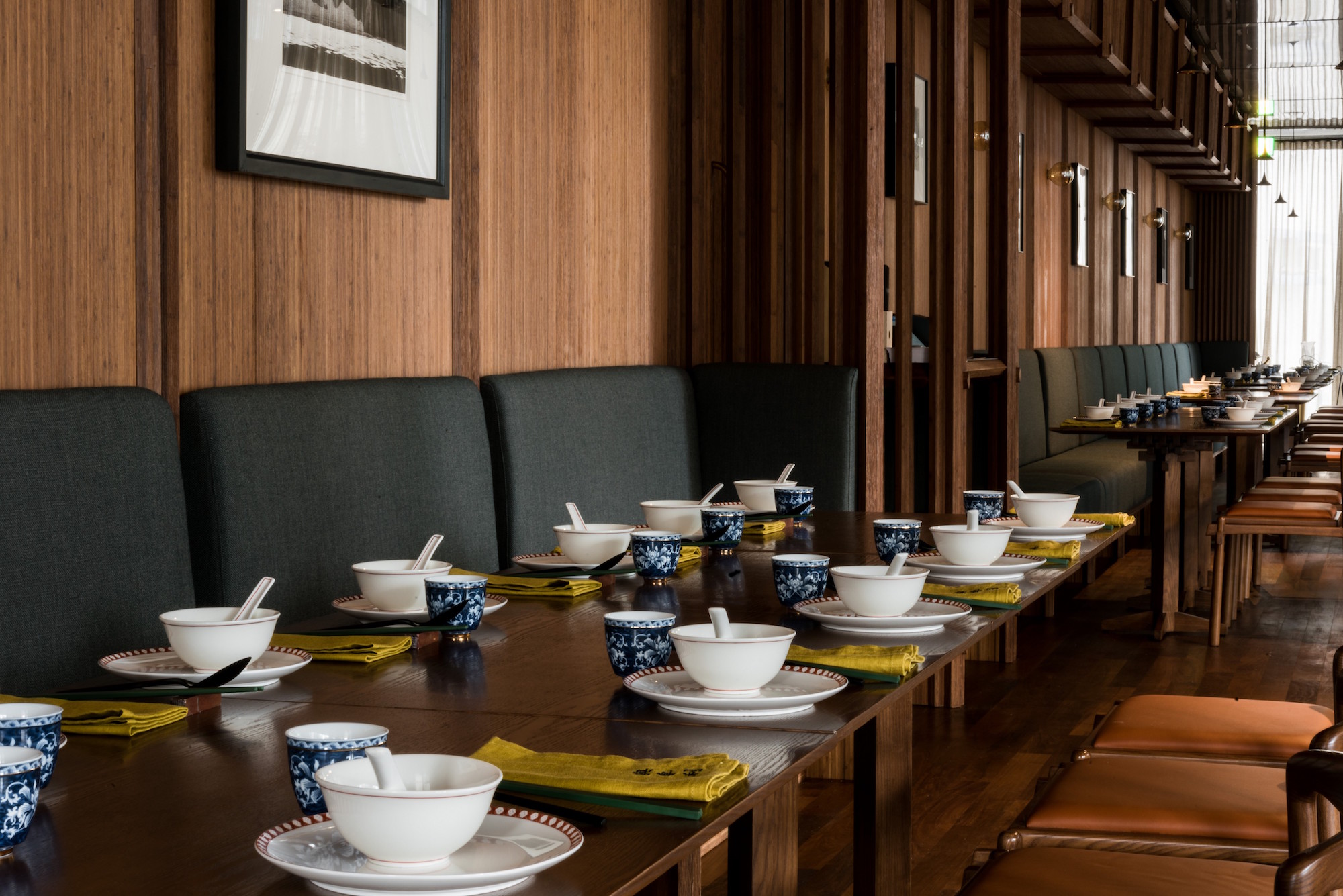 “Big Station.” It
refers to the restored and re-purposed former law
enforcement compound that included the Central
Police Station, Victoria Prison and the Central
Magistracy. In 1995, it was designated an historic
area. There are already five new restaurants
there, with more slated to open soon, along with
art and cultural areas.
“Big Station.” It
refers to the restored and re-purposed former law
enforcement compound that included the Central
Police Station, Victoria Prison and the Central
Magistracy. In 1995, it was designated an historic
area. There are already five new restaurants
there, with more slated to open soon, along with
art and cultural areas.
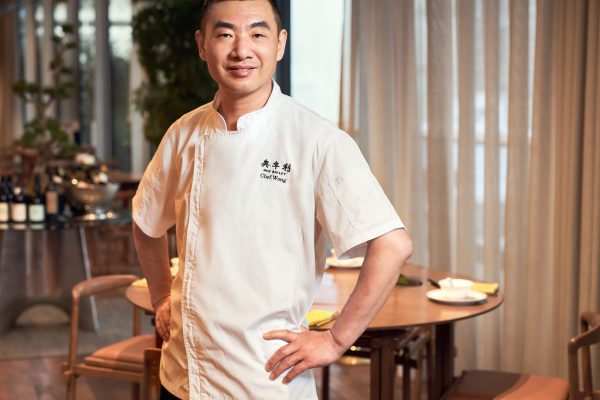 Old Bailey is in a
Herzog-de Meuron-designed building that artfully
combines colonial architecture with a
contemporary aesthetic. The menu similarly
focuses on traditional and modern
interpretations of food from Jiangnan province,
known for clean, delicate flavors with a focus
on healthful, seasonal eating.
Old Bailey is in a
Herzog-de Meuron-designed building that artfully
combines colonial architecture with a
contemporary aesthetic. The menu similarly
focuses on traditional and modern
interpretations of food from Jiangnan province,
known for clean, delicate flavors with a focus
on healthful, seasonal eating.
The
menu’s unique dishes, crafted by chef Wong Gwan
Man (left),
begin with seductive plates of pickles brought to
the table. His signature dishes include Mala
Ibérico pork dumplings in rich soup (xiaolongbao);
Hangzhou duck soup with handmade fish balls, ham,
bamboo shoots and reeds; double boiled lion's head
are hand-minced pork meatballs with hairy crab,
and the Longjing green tea smoked pigeon
is garnished with fried leaves and dramatically presented at
the table under a birdcage. Village-style
handkerchief pasta with seasonal greens was also
delightful.
Old
Bailey, Shop 20, 2/F, Tai Kwun, 10 Hollywood
Road, Central. +852 2877 8711
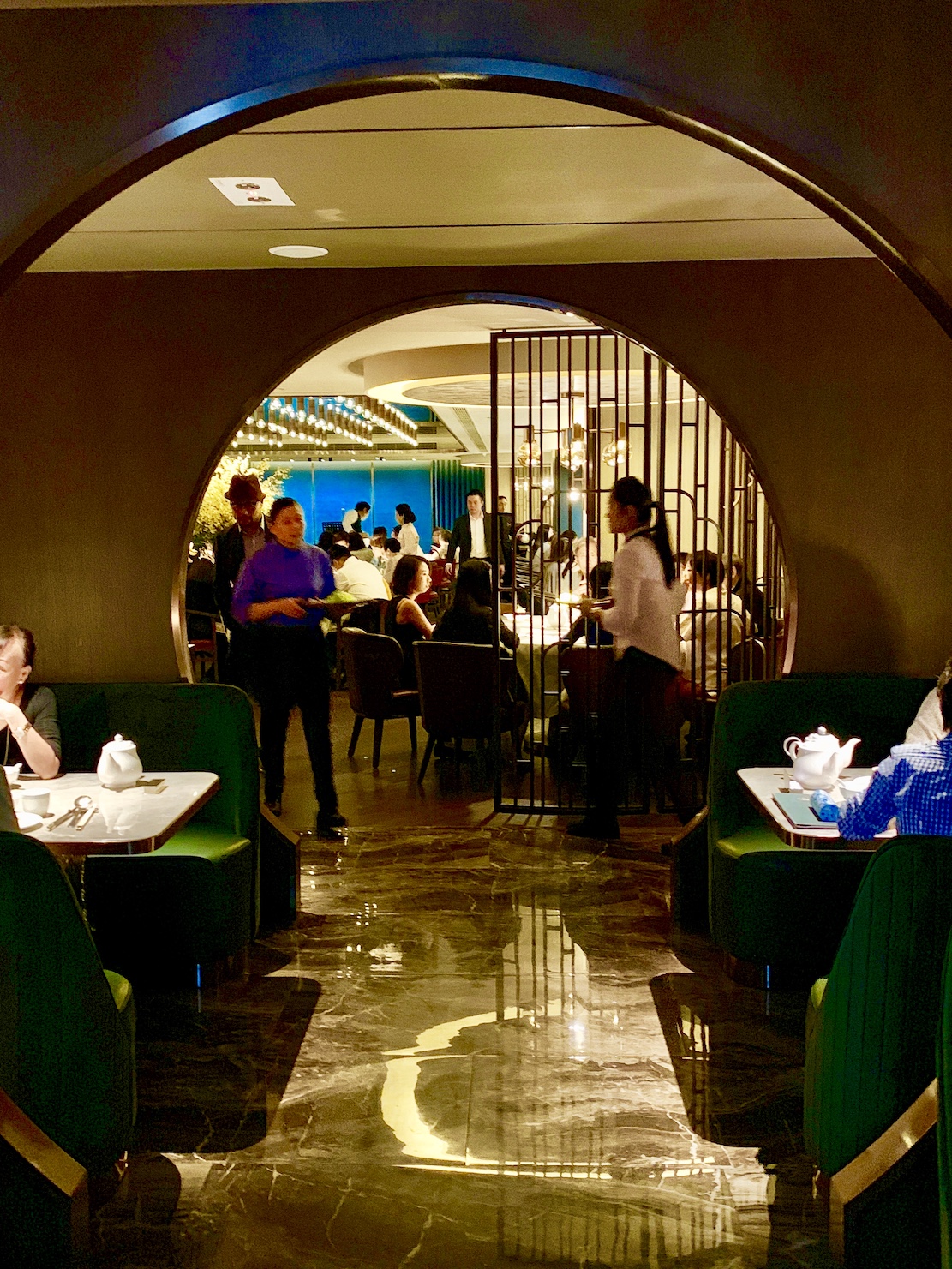 10 SHANGHAI–—This restaurant is
located inside the Lee Garden Two
10 SHANGHAI–—This restaurant is
located inside the Lee Garden Two 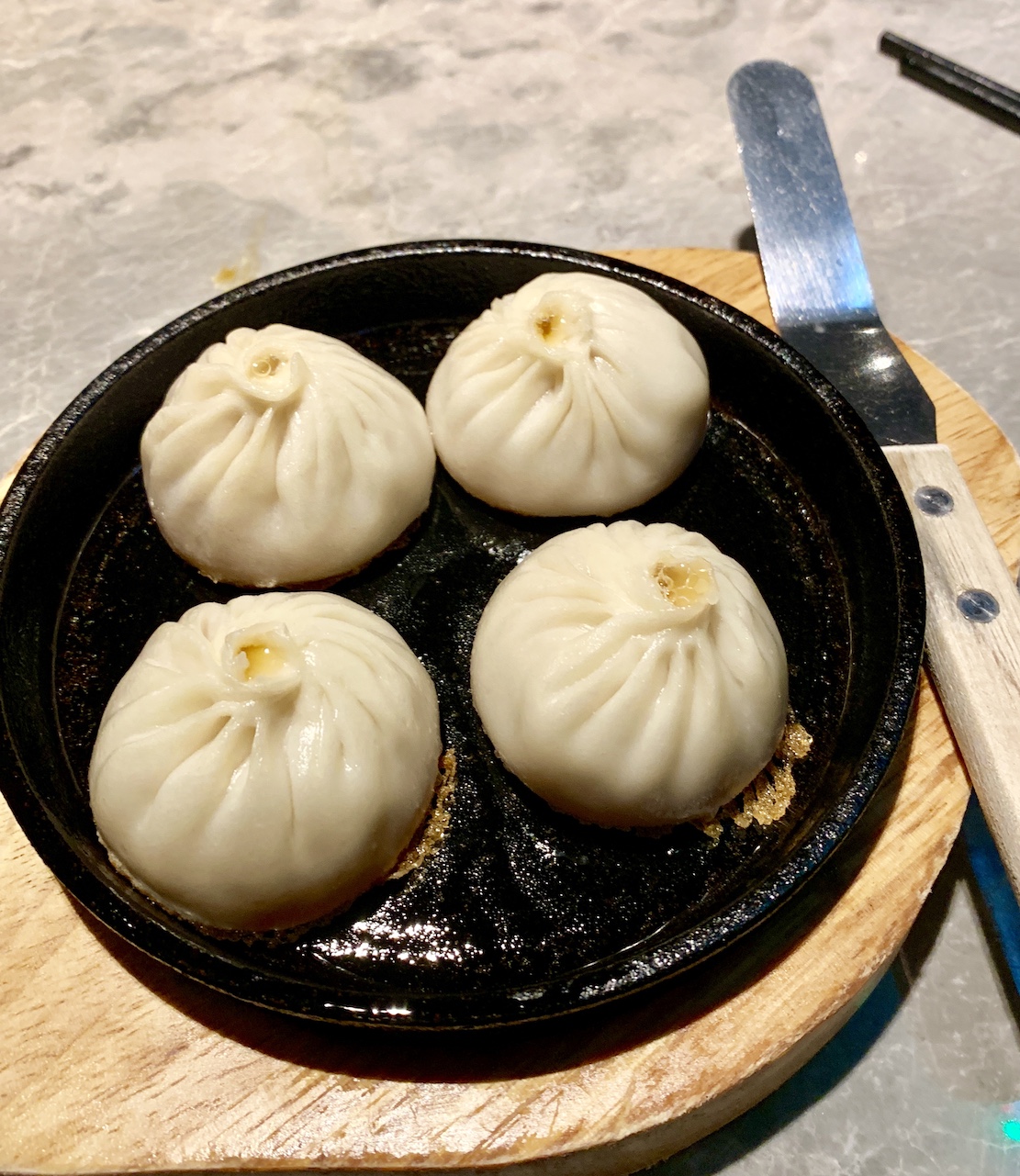 shopping center in
Causeway Bay. To enter, you pass through a
striking, circular Chinese moon archway into an
elegant art deco interior where live music from
the ’30s is playing. It recalls Shanghai’s
glamorous Golden Age of nightlife.
shopping center in
Causeway Bay. To enter, you pass through a
striking, circular Chinese moon archway into an
elegant art deco interior where live music from
the ’30s is playing. It recalls Shanghai’s
glamorous Golden Age of nightlife.
The retro
setting provides a sophisticated venue to showcase
executive chef David
Chen’s Huaiyang cooking that emphasizes the
natural flavors of ingredients. His dishes
deliver purity of taste and are aesthetically
stunning, often thanks to his expert knife
skills. A seemingly simple sliced turnip disks
in chicken soup was bursting with taste, the
turnip disks artfully complemented with vibrant
greens. His recent Great Northern Feast Menu
included dishes like xiaolongbao,
dumplings with thin, strong skins that hold a
rich, aromatic soup and a delicious meatball
inside. Other signature
dishes included crispy Darjeeling smoked chicken
with tea leaves, as well as Longjing
tea-smoked soft-boiled eggs with black truffle
pearls. Rice dumplings in sweet ginger soup were a
fittingly light but flavorful finale to the meal.
10
Shanghai, Shop 101, Lee Garden Two, 28 Yun Ping
Rd, Causeway Bay, +852 2338 5500.
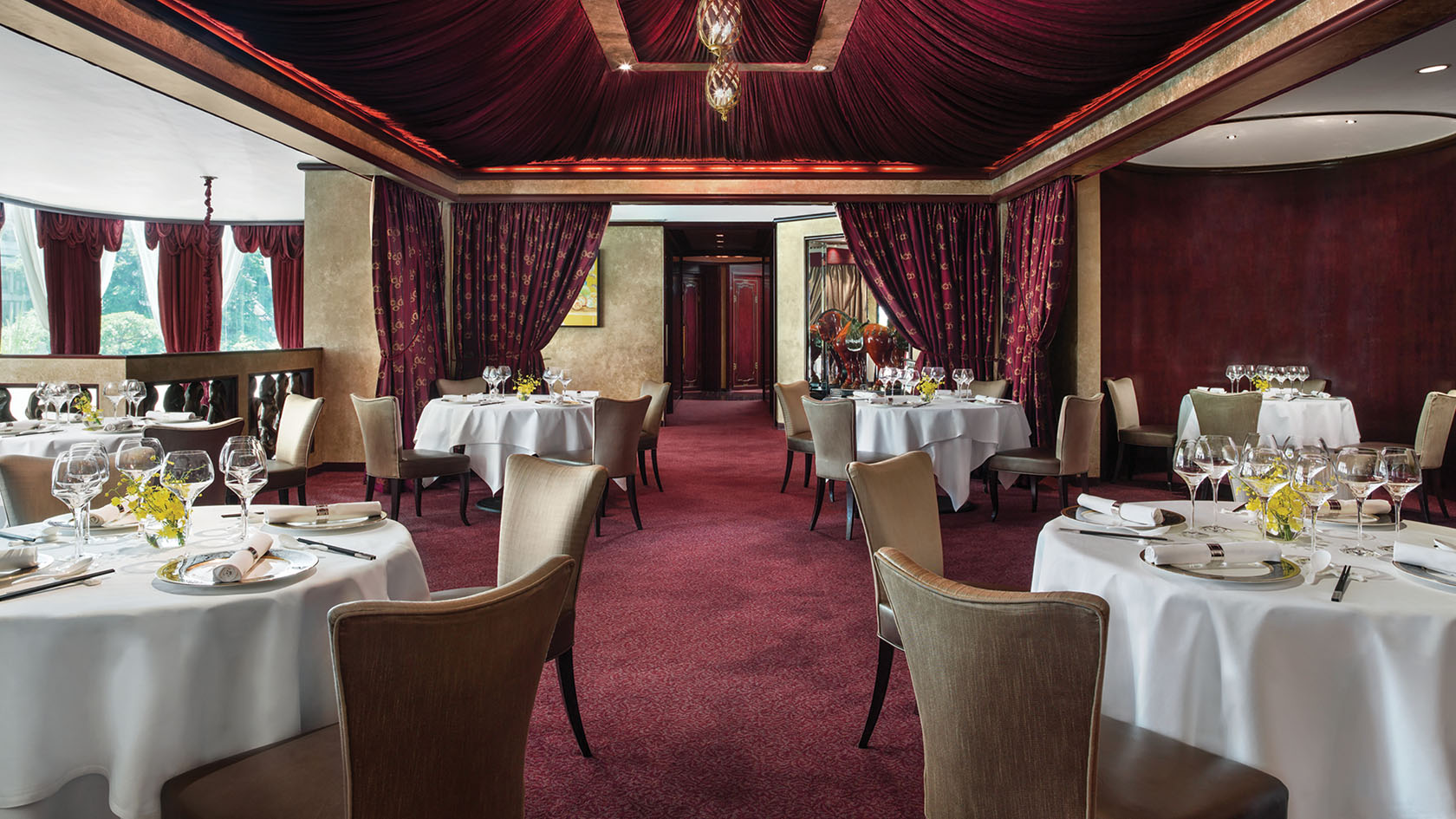
I also
dined in the venerable, three Michelin-starred T’ANG COURT (left), in the
Langham Hotel, Kowloon, where timeless Cantonese
dishes were exquisitely created and presented in
the luxurious setting.
At the beautiful, contemporary
one-starred ÉPURE,
the menu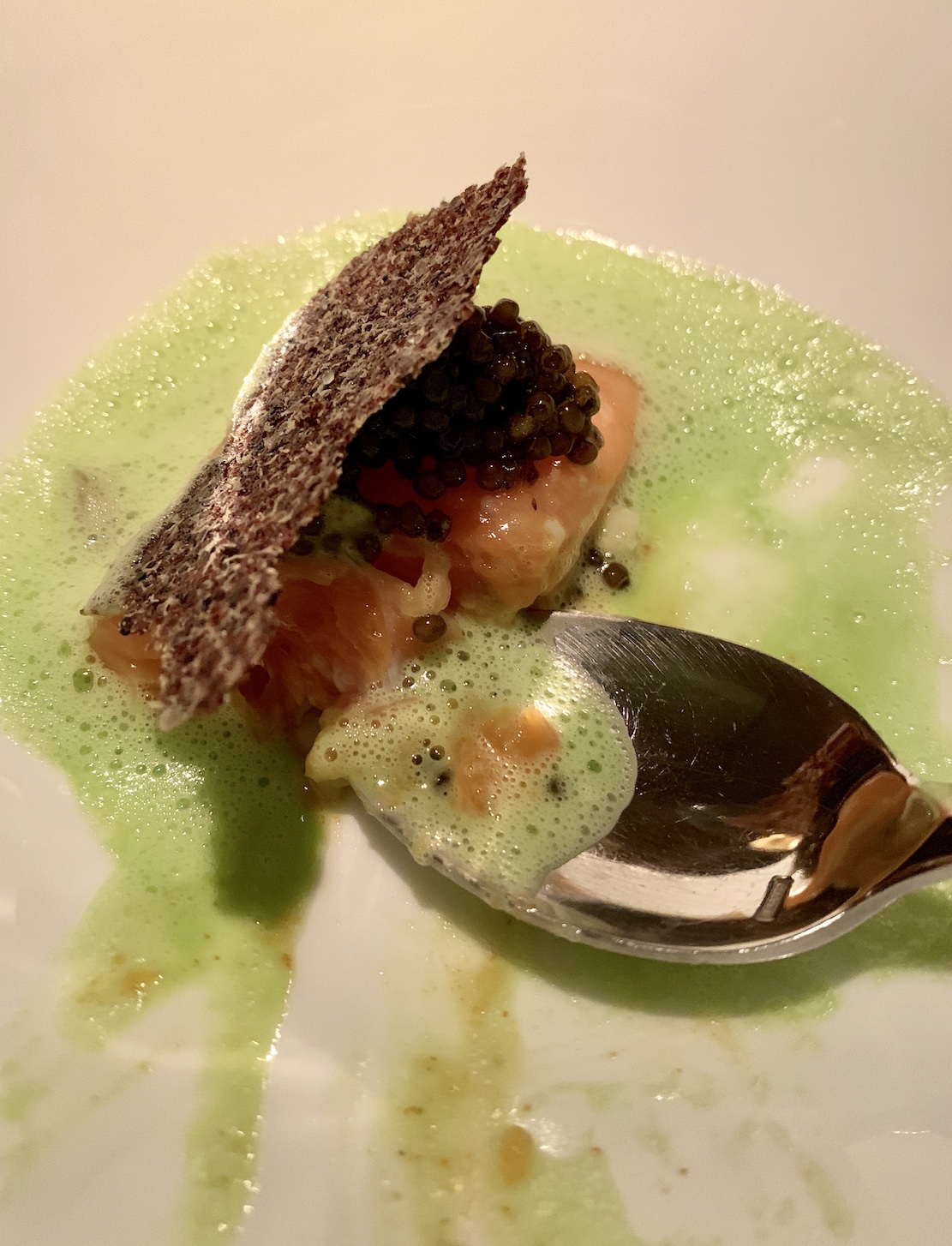 is
uncomplicated yet elegant. I had a six-course
caviar-tasting menu (right) that was well
conceived and inventive. Finally, I also took a
delightful foodie walking tour in Sham Shui Po, a
lively blue-collar neighborhood. Loved the
dumplings and rice noodles with hoisin, sweet
chili sauce and sesame seeds.
is
uncomplicated yet elegant. I had a six-course
caviar-tasting menu (right) that was well
conceived and inventive. Finally, I also took a
delightful foodie walking tour in Sham Shui Po, a
lively blue-collar neighborhood. Loved the
dumplings and rice noodles with hoisin, sweet
chili sauce and sesame seeds.
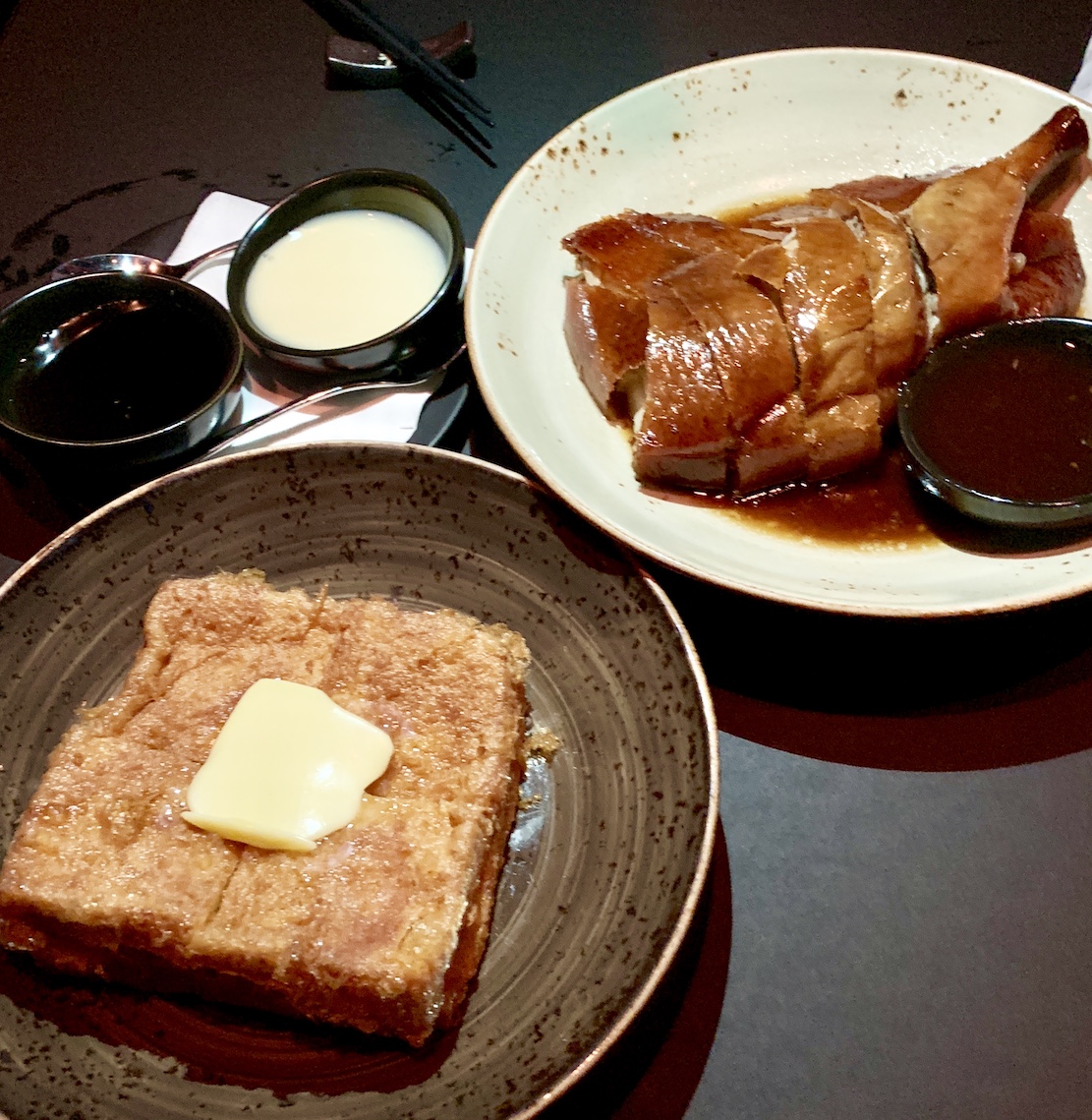
HO LEE FOOK: Funky kitchen in
the style of cha
chaan tengs and old school NY Chinatown
hangouts in the ’60s. Great
dumplings, roast goose (left) and French toast served
with peanut butter, maple syrup and condensed
milk.
FUKURO, an izakaya
concept, is next door, both belonging to the
Black Sheep Restaurants group. I ran in briefly
and had dessert of seaweed flavored Monaka (Japanese sweet azuki bean
paste) ice cream sandwich with cherry compote. 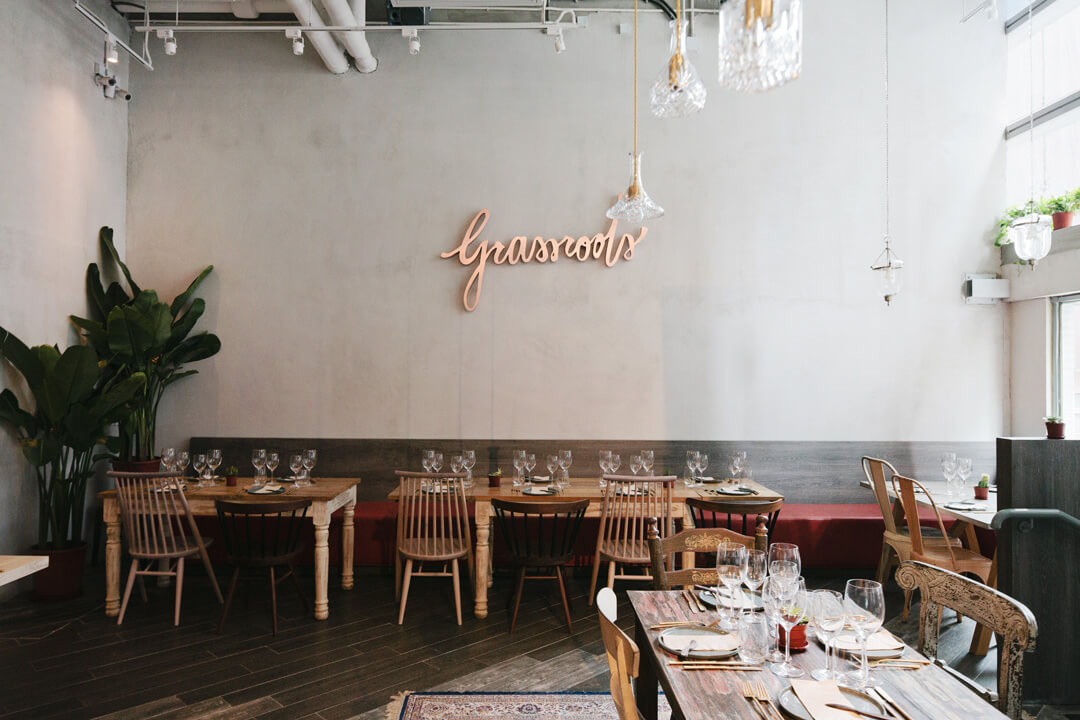
GRASSROOTS
PANTRY (right) on Hollywood
Rd. Uber chic destination for vegans and
vegetarians in a rustic, plant-filled wooden space
focused on plant-based food and sustainability.
❖❖❖
By John Mariani
914-592-3500
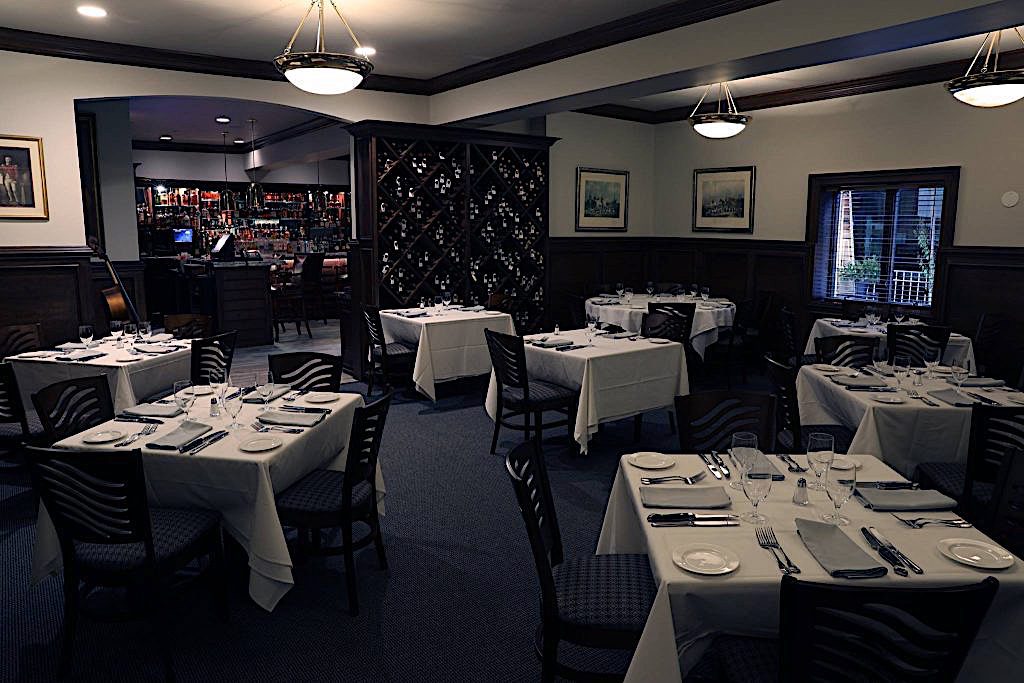
The
neglect by the New York food media to review
steakhouses, unless it’s to bash a buzzy place
like Nusr-Et, run by a preening Turkish chef who
tosses salt on your food from two feet away, is
near total. And none of the critics ever returns
to see if classic New York steakhouses like
Peter Luger, Palm or the Old Homestead are
living up to their reputations.
The rationale among the critics
is that so many steakhouses are so alike, which is
as preposterous as to say that all the city’s
French bistros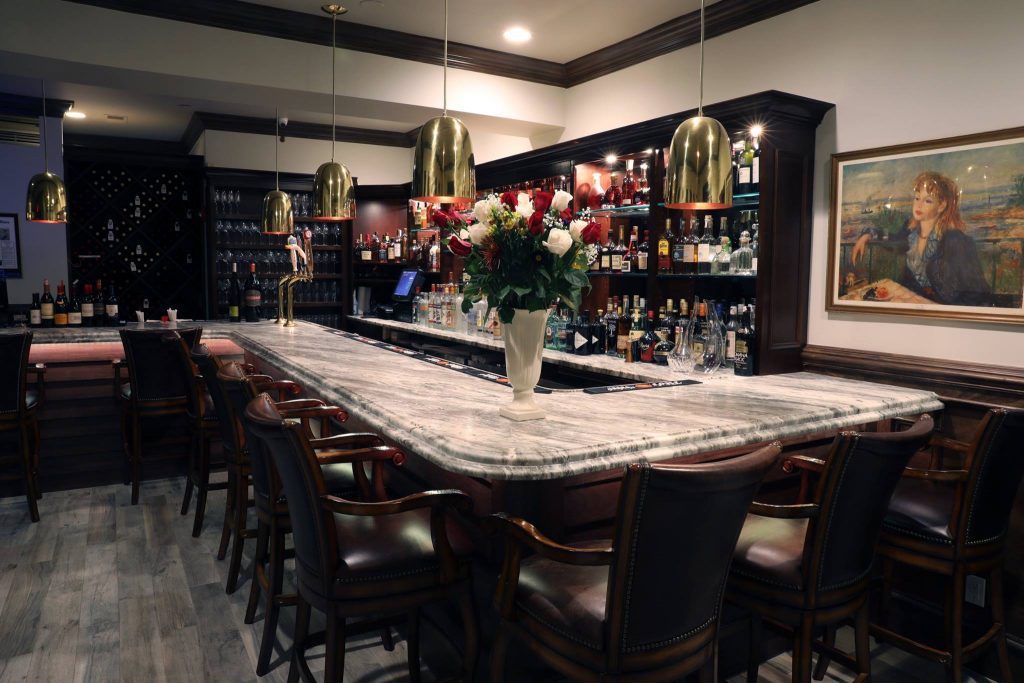 or Italian trattorias
are alike. The fact is, except for overlap on the
menus, Smith & Wollensky is no more like
Porter House than Abbott is like Costello. In all
restaurants that serve traditional dishes
everything depends on the quality of the
ingredients and the way they are cooked, which is
the reason the New York media are constantly
searching out yet another hamburger joint or
pizzeria for some form of novelty.
or Italian trattorias
are alike. The fact is, except for overlap on the
menus, Smith & Wollensky is no more like
Porter House than Abbott is like Costello. In all
restaurants that serve traditional dishes
everything depends on the quality of the
ingredients and the way they are cooked, which is
the reason the New York media are constantly
searching out yet another hamburger joint or
pizzeria for some form of novelty.
I, on the other hand, love
going to steakhouses whose competition with all
the rest means they must buy the best beef,
seafood and vegetables they can find. Too
many these days claim to serve Prime beef dry-aged
for outlandish periods of time, when anything over
28 days is actually counterproductive, despite the
hype. Some
may use lump crabmeat in their crabcake, others
jumbo or even colossal. Some may make their own
desserts, others buy the always wonderful S&S
Cheesecake.
These
considerations don’t even begin to address
ambiance, design and service, which can vary from
the fake macho of so many to the cheery
hospitality of others. All these are factors I consider
when going to a steakhouse, and returning to a
classic New York place, albeit in Westchester
County, like Flames, which I do with the
expectation that it’s among the best in the region
and considerably better than many in Manhattan or
Brooklyn.
Owner
and executive chef Nikola Vulaj worked in many
of them before opening his own back in 1992, in
Chappaqua, N.Y., and now his new Flames in
Elmsford. With a fine white marble bar, a main
dining room and a lovely private room, Flames
has the old-fashioned look of an American
chophouse—stone
fireplace, soft overhead lighting, dark
wainscoting, very comfortable chairs, tilted
mirrors and white tablecloths. The service staff
are veterans and work in teams to bring out all
the courses and side dishes people order, though
if there’s a party in full swing, service in the
main room slows down.
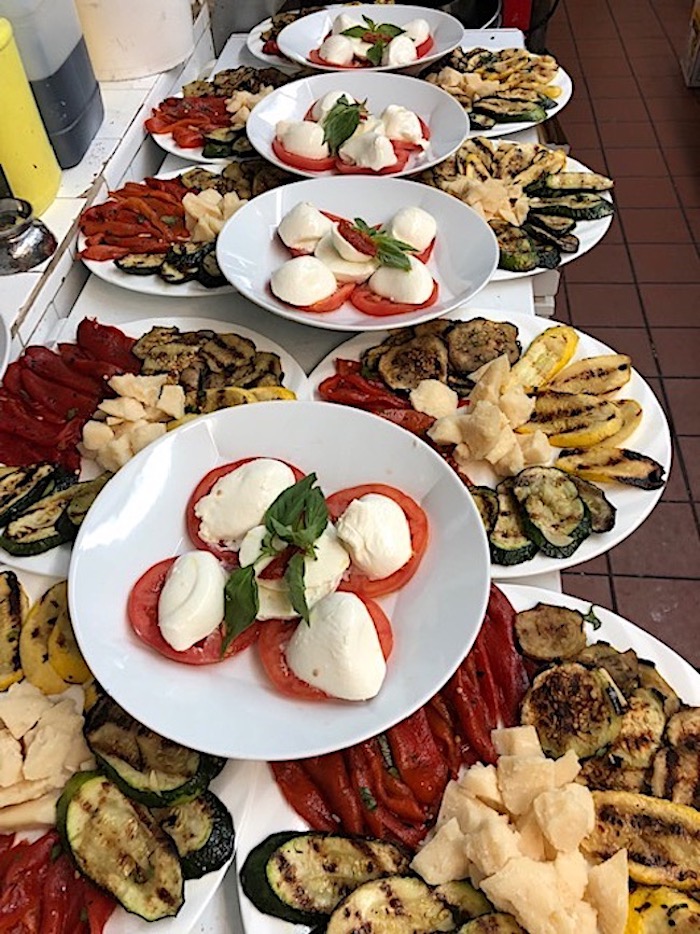 As soon as you sit down
you’ll get a good loaf of bread with a generous
slab of butter at the right temperature. At the
bar fresh hot potato chips cooked in beef fat are
offered.
As soon as you sit down
you’ll get a good loaf of bread with a generous
slab of butter at the right temperature. At the
bar fresh hot potato chips cooked in beef fat are
offered.
The crabmeat cocktail and
crabcake are indeed made with big, sweet lumps of
colossal size ($21.95), as are the shrimp. Fried
calamari are always crispy and meaty, and I
usually order the eggplant rollatini
with prosciutto and melted fontina ($12.95),
though on a recent visit it was too firm.
The menu description for
spaghetti alla
carbonara reads “done the right way,” that
is, without cream, onions or parsley, and it is
easily one of the best I’ve had this side of Rome.
The
veal chop with mushrooms ($48.95) weighs in at
about 16 ounces, and the American rack of
lamb comes as four well-fatted chops. The usual cuts
of beef, from filet 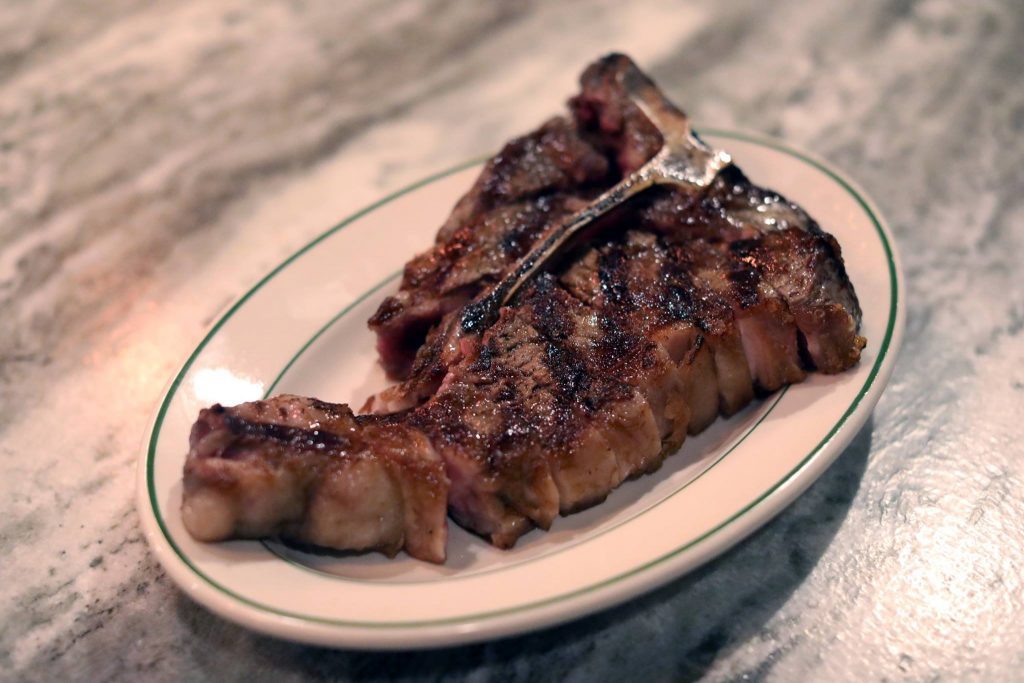 mignon ($48.95) to
porterhouses sliced for two to four people ($98 to
$188), are of the best quality available,
impeccably seared and rosy-red inside when
medium-rare. I applaud Vulaj for taking wagyu beef
off the menu, because his American Prime is so
much better than the American wagyu and most
Japanese kobe out there.
mignon ($48.95) to
porterhouses sliced for two to four people ($98 to
$188), are of the best quality available,
impeccably seared and rosy-red inside when
medium-rare. I applaud Vulaj for taking wagyu beef
off the menu, because his American Prime is so
much better than the American wagyu and most
Japanese kobe out there.
Some steakhouses have dropped
whole lobsters from their menus, but not Flames,
and they are all giants, from three to four pounds
(MP), served with a big ramekin of clarified
butter. (You
might ask for just melted butter, which has
more flavor.)
The creamed spinach is
luxurious, with a touch of nutmeg, and both the
French fries and mashed potatoes are excellent.
Last visit the onion rings came to the table limp,
but I suspect that was a momentary slip-up.
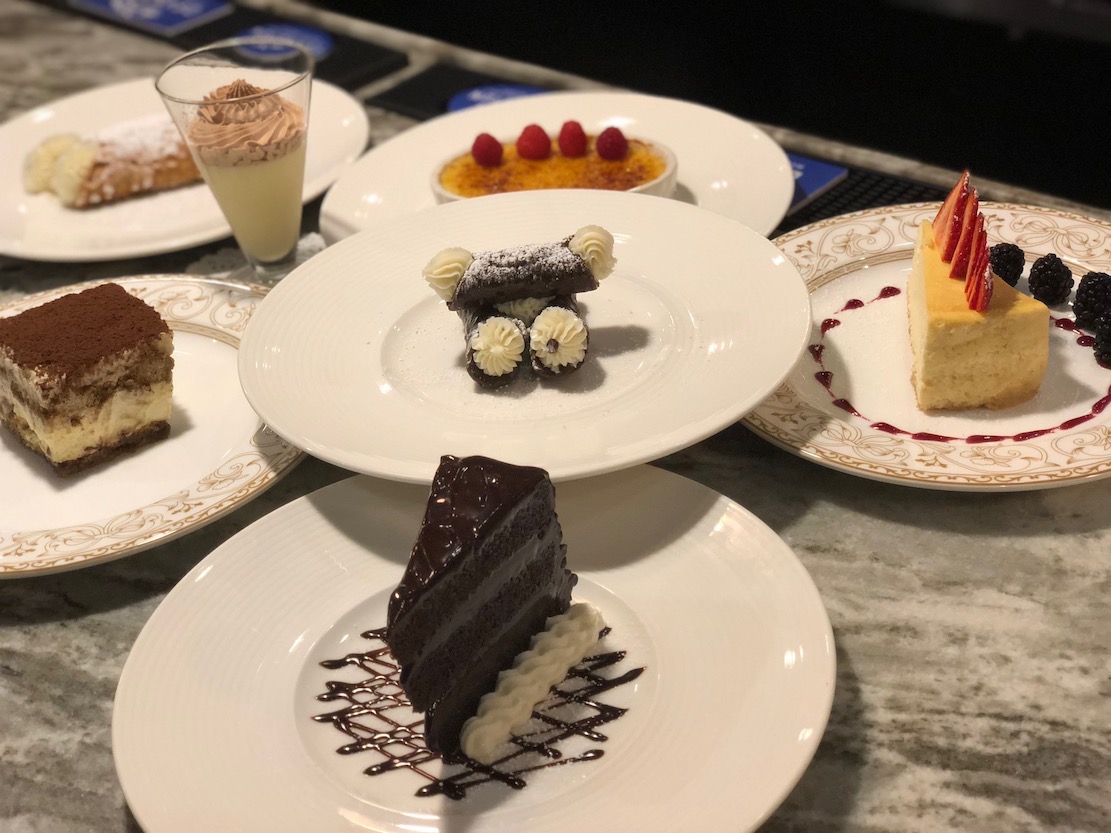 Desserts
are largely housemade and the longtime specialty
is the zucchino ($10),
with
layers of English cream, white chocolate and mocha
mousse and meringue.
Desserts
are largely housemade and the longtime specialty
is the zucchino ($10),
with
layers of English cream, white chocolate and mocha
mousse and meringue.
Vulaj has always been proud of
his 250-label wine list and he prices it
carefully. There are trophy wines galore but a lot
of pretty good bargains among the lesser choices.
If Flames were merely as good
as any in Manhattan, it would be noteworthy
enough. But with the quality of food it serves, it
might even deserve a trip from the city by the
same New York critics who ignore steakhouses in
their hometown.
Open daily for lunch and dinner.
❖❖❖
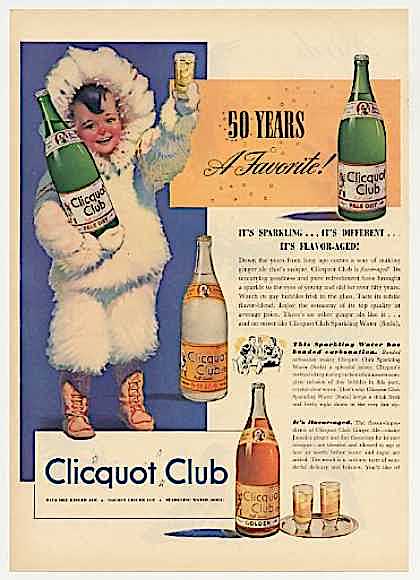
WHAT I'M DRINKING IN JANUARY
By John Mariani
Given winter’s sudden blasts of snow, I find myself dining happily at home a good deal and, since I don’t have to drive back from a restaurant meal, I tend to drink somewhat more full-bodied reds and allow myself an after-dinner drink while settling back for a little binge-watching TV.
FONTANAFREDDA SERRALUNGA D’ALBA
BAROLO 2014 ($59)—Serralunga  is Piedmont’s most
illustrious region for Barolo, and
Fontanafredda has 250 acres of it, rich in
minerals that give this wine exceptional
depth. Winemaker Danilo Drocco aims for
finesse and, even though this is a young
vintage, the richness and levels of flavor are
dazzling, and the 13.5% alcohol perfect. It
will get even better with two to five years of
age.
is Piedmont’s most
illustrious region for Barolo, and
Fontanafredda has 250 acres of it, rich in
minerals that give this wine exceptional
depth. Winemaker Danilo Drocco aims for
finesse and, even though this is a young
vintage, the richness and levels of flavor are
dazzling, and the 13.5% alcohol perfect. It
will get even better with two to five years of
age.
CASADEI SOGNO MEDITERRANEO 2016 ($25)—A good price for a full-bodied red, even if it’s only from the 2016 vintage. The lush fruit comes from the 60% Syrah used, with 20% Mourvèdre and 20% Grenache, so this is an unusual Rhône-style Tuscan wine at 14% alcohol. It gets an IGT appellation, and the blend may differ year to year. It’s delicious right now with lamb or spicy chicken.
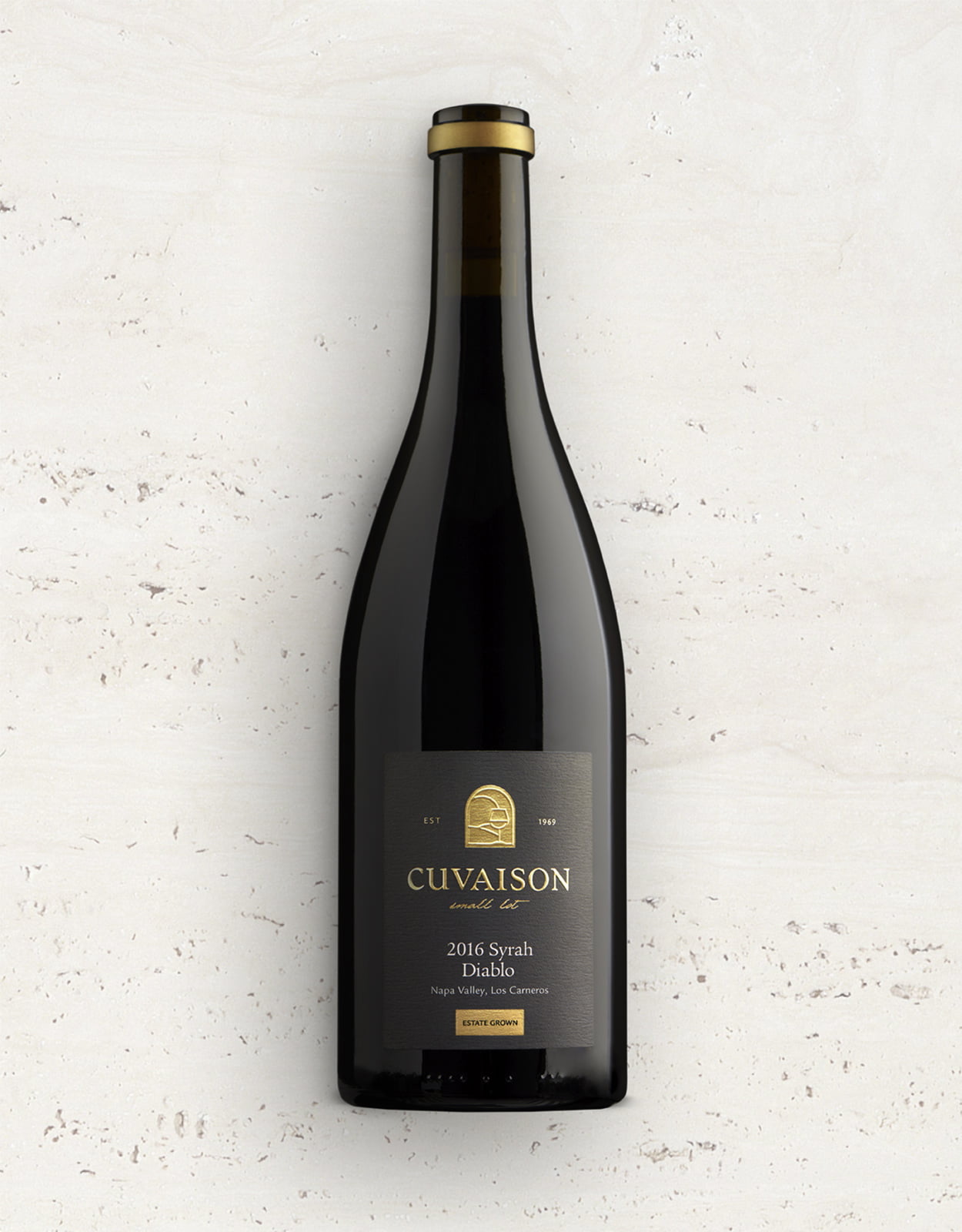
CUVAISON SYRAH DIABLO 2016 ($45)—Compare this 100% Syrah with the Tuscan Syrah blend above and you’ll find the extra half-point of alcohol here provides a slightly bigger boost to the plum-like flavors without being jam-like. It’s a little less bold than the 2015 vintage but is rewarding with all kinds of meats, particularly well-fatted pork, even barbecue ribs.
CHÂTEAU PATACHE D’AUX 2013 ($20)—A nice entry-level Bordeaux from a small estate in the Médoc with vines averaging 35 years in age. The mix is 60% Cabernet Sauvignon, 30% Merlot, 7% Cabernet Franc and 3% Petit Verdot, which is fairly typical of the region’s wines. It spends a year in French oak, so its essential grape flavors are still forthright, without too much oak in the taste. With a hamburger this is a very good choice but it will match as well with a strip steak or rack of lamb.
LONG MEADOW RANCH PINOT NOIR
2015 ($40)—This Anderson Valley
Pinot Noir  has great charm,
starting with its soft touch on the palate,
its rich fruit à la the California style, and
a reasonable 13.5% alcohol, which makes it a
fine winter wine with any veal dishes, even
roasted wild salmon.
has great charm,
starting with its soft touch on the palate,
its rich fruit à la the California style, and
a reasonable 13.5% alcohol, which makes it a
fine winter wine with any veal dishes, even
roasted wild salmon.
KAIYŌ CASK STRENGTH WHISKY ($120)—Coming straight out
of the cask at 53% alcohol after being aged in
porous Mizunara oak, this gives a whole lot of
bang for the big bucks it sells for. But it is
not a curiosity, for it’s so cleanly made,
quite Japanese in its refinement. The
name means “ocean,” referring to the three
months it spends aging at sea in barrel, which sounds
gimmicky but actually rounds out and adds
nuance via changes in
temperature, air pressure
and the rocking on the waves of the tankers
it’s placed aboard. Those changes endemic to a
sea voyage are all well-known to spirits and
wine producers. It just came out in September
in limited release.
sounds
gimmicky but actually rounds out and adds
nuance via changes in
temperature, air pressure
and the rocking on the waves of the tankers
it’s placed aboard. Those changes endemic to a
sea voyage are all well-known to spirits and
wine producers. It just came out in September
in limited release.
MICHTER’S LIMITED RELEASE TOASTED BARREL FINISH BOURBON ($60)—Michter’s takes its straight bourbon and ages it for an additional period in a second, custom-made barrel made from 18-month air-dried wood that has been toasted but not charred, then bottled at 91.4 proof. The result is a silky smooth bourbon with considerable subtlety in terms of nuttiness and hints of vanilla and cinnamon. With just a splash of water, the aromas really emerge.
❖❖❖
Wine
Column Sponsored by Banfi Vintners
SANGIOVESE
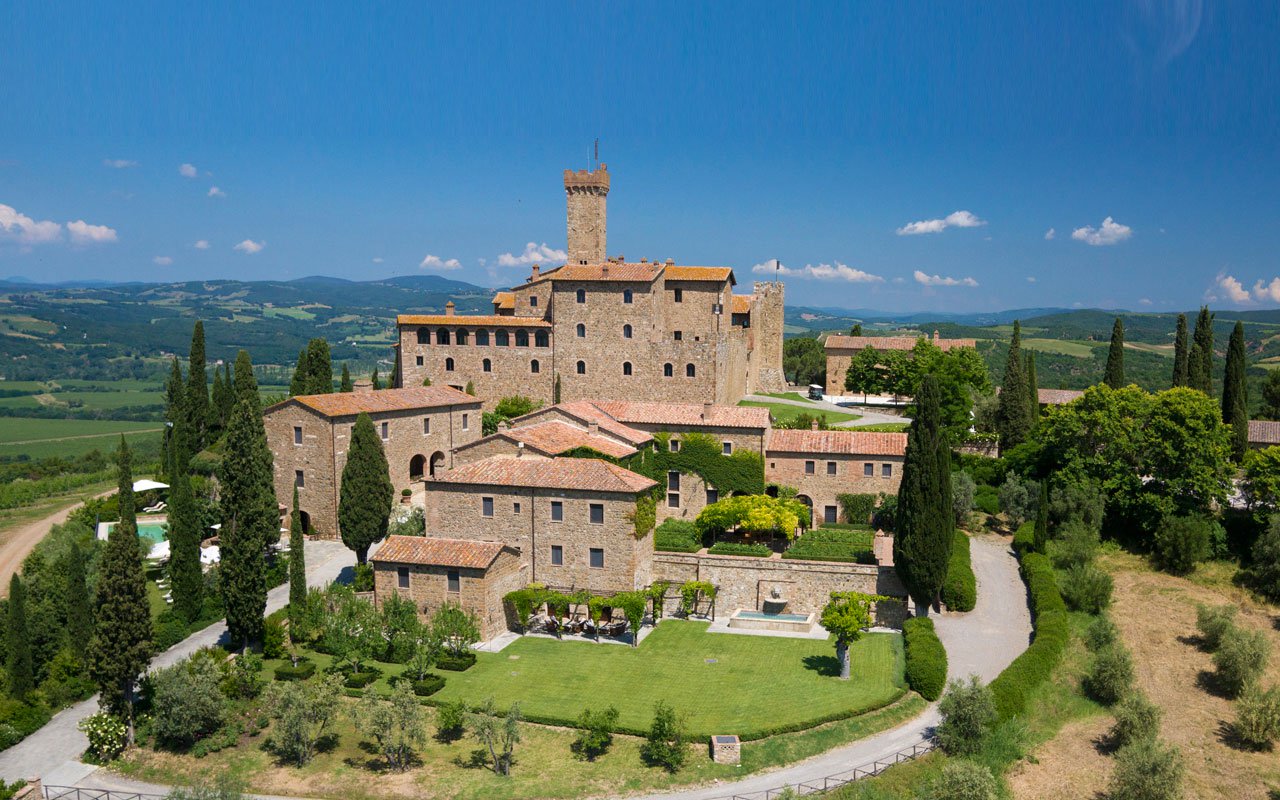 Wine is a joy year-round but
in cooler weather one
grape varietal has really taken center stage in
my daily activities – that most Italian of
grapes, Sangiovese, and its ultimate expression
– Brunello di Montalcino.
Wine is a joy year-round but
in cooler weather one
grape varietal has really taken center stage in
my daily activities – that most Italian of
grapes, Sangiovese, and its ultimate expression
– Brunello di Montalcino.
From mid-September through mid-October,
the Sangiovese grown for our various styles of red
wines are be harvested, culminating with the top
selection for Brunello di Montalcino.
Second, cooler weather here means
it is time to start enjoying more red wines and
especially Sangiovese based wines. That
includes Banfi’s cru of Brunello, Poggio alle Mura,
literally the cream of the crop of our Sangiovese
vineyards. Alongside our Poggio alle Mura Brunello di
Montalcino, this year we introduced two more wines
from the cru Poggio alle Mura – a Rosso di Montalcino
and a Riserva of Brunello. Rosso is sort of like the
younger brother of Brunello, also made from 100%
Sangiovese grapes but usually a selection from younger
vines and the wine is aged only two years compared to
the four required for Brunello. The
Riserva, on the other hand, is an even more selective
harvest of Sangiovese, and ages for an additional year
before release.
What is so special about this cru
Poggio alle Mura?
Well, it is the result our over 30 years of
ongoing research at my family’s vineyard estate,
Castello Banfi.
When we first began planting our vines there in
the late 1970s studies from the University of Bordeaux
indicated which strains of many varietals we should
plant, based on the soil type and microclimate of each
vineyard. But
when it came to the region’s native Sangiovese, there
was only local lore, no scientific research. So we took
it upon ourselves to figure out this vine, and set off
on three decades of incredibly detailed research.
We started
with 600 apparent variations on Sangiovese, because it
is so susceptible to variations in weather and soil,
and narrowed that down to 160 truly genetically
different clones.
We planted a vineyard with two rows of each
type, made wine from each of them, and charted the
differences – remember, you only get one chance a year
to make wine, so this took time.
It took about ten years to get some
concrete results, though we continue to experiment
today and always will – you never stop learning in
science and nature!
Once we determined which were the best,
complementary clones that could be planted together to
make the best Brunello, we chose to plant them in what
we determined to be the optimal vineyard sites. Coincidentally,
the best soils and climate conditions are in the
slopes surrounding the medieval fortress today known
as Castello Banfi, known since Etruscan times as
Poggio alle Mura – the walled hilltop. Hence the
name of our most special “cru” of Brunello,
representing a synthesis between tradition and
innovation.
Though the focus of this study was
our Brunello, all of our Sangiovese-based wines,
including the super Tuscans SummuS, Cum Laude, and
Centine, benefitted from this work. And that’s
the third reason for celebrating Sangiovese this
month, for the range of wonderful reds that usher us
into autumn! One
wine in particular was inspired by our research – the
BelnerO, a Sangiovese dominant blend with what I like
to call a kiss of Cabernet and a whisper of Merlot. We grow the
grapes a little differently for BelnerO than for
Brunello, make the wine with less oak aging and
released it earlier from the winery, providing a
counterpoint to Brunello and a lovely terroir-driven
wine in its own right.
If you
know Italians, you know that by nature we are
multi-faceted, varying in mood, and always passionate. As a
nation, we span from the hot sunny beaches of Sicily
near the African coast to the rugged mountains and
Alpine ski slopes of Trentino-Alto Adige in the north. Sangiovese
is grown in almost all of Italy’s regions and reflects
the unique nature of each; it is most famous
(rightfully so) in Tuscany, yet even there it reflects
the nuances of each hilltop, valley and subzone. It has
something a little different to say in Brunello than
Chianti, Morellino than Vino Nobile di Montepulciano,
Rosso di Montalcino than Super Tuscan blends.
Here is a smattering of
Sangiovese-based wines that you may wish to get to
know better, reflecting a spectrum that appeals to
every occasion, every taste, and every budget. We can
assure you that the conversation will never become
boring. 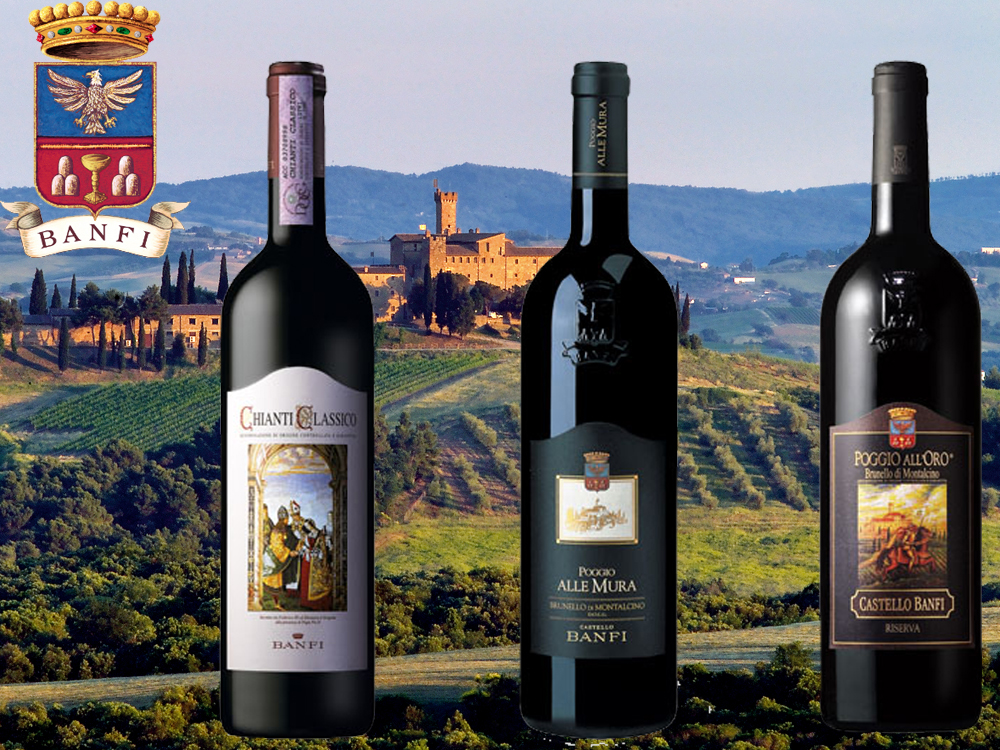
Recommendations for Celebrating
Sangiovese
BelnerO Proprietor’s Reserve Sangiovese
– A refined
cuvée of noble red grapes perfected by our pioneering
clonal research. This dark beauty, BelnerO, is
produced at our innovative winery, chosen 11
consecutive years as Italy’s Premier Vineyard Estate.
Fermented in our patented temperature controlled
French oak and aged approximately 2 additional years.
Unfiltered, and Nitrogen bottled to minimize sulfites.
Castello Banfi Brunello di Montalcino –
Rich, round, velvety and intensely
aromatic, with flavor hints of licorice, cherry, and
spices. Brunello di Montalcino possesses an intense
ruby-red color, and a depth, complexity and opulence
that is softened by an elegant, lingering aftertaste.
Unfiltered after 1998 vintage.
Castello Banfi Rosso di Montalcino – Brunello's "younger brother," produced
from select Sangiovese grapes and aged in barrique for
10 to 12 months. Deep ruby-red, elegant, vibrant,
well-balanced and stylish with a dry velvety
finish.
Poggio all’Oro Brunello di Montalcino
Riserva – A single vineyard selection of our most
historically outstanding Sangiovese, aged five years
before release, the additional year more than that
required of Brunello including 6 months in barrel and
6 months more in bottle to grant its “Riserva”
designation. Incredible
elegance and harmony. Intense with lots of fruit and
subtle wood influence. Round, complete, well balanced
with hints of chocolate and berries. Unfiltered after
1998.
Poggio alle Mura – The first tangible result of years of
intensive clonal research on Montalcino’s native
Sangiovese grape.
Estate bottled from the splendidly sun drenched
vineyards surrounding the medieval Castello from which
it takes its name.
The Brunello
di Montalcino is seductive, silky and smoky. Deep ruby
in color with an expressive bouquet of violets, fruits
and berries as well as cigar box, cedar and exotic
spices. The Rosso
di Montalcino is also intense ruby red. The bouquet
is fresh and fruity with typical varietal notes of
cherry and blackberry, enriched by more complex hints
of licorice, tobacco and hazelnut. It is full
bodied, yet with a soft structure, and a surprisingly
long finish. The Poggio alle Mura Brunello di Montalcino
Riserva is deep ruby red with garnet
reflections and a rich, ample bouquet that hints of
prune jam, coffee, cacao and a light balsamic note. It is full
and powerful, with ripe and gentle tannins that make
it velvety and harmonious; this wine is supported by a
pleasing minerality that to me speaks soundly of that
special hillside in southern Montalcino.
SummuS – A wine of towering elegance, SummuS is an
extraordinary blend of Sangiovese which contributes
body; Cabernet Sauvignon for fruit and structure; and
Syrah for elegance, character and a fruity bouquet. An elegant,
complex and harmonious red wine.
Cum Laude – A complex and elegant red which graduated
“With Honors,” characterized by aromas of juicy
berries and fresh spices.
Centine – A Cuvee that is more than half
Sangiovese, the balanced consisting of equal parts of
Cabernet Sauvignon and Merlot. Vinified in
a firm, round style that easily accompanies a wide
range of dishes, this is a smooth and fragrantly
satisfying wine with international character, and a
perennial favorite at my own dinner table.
Banfi Chianti Superiore – The “Superiore” designation signifies
stricter government regulations regarding production
and aging requirements, as compared to regular
Chianti. An
intense ruby red wine with fruit forward aromas and
floral notes. This
is a round wine with well-balanced acidity and fruit.
Banfi Chianti Classico – An enduring classic: alluring
bouquet of black fruit and violets; rich flavors of
cherry and leather; supple tannins and good acidity
for dining.
Banfi Chianti Classico Riserva – Produced from select grapes grown in the
"Classico" region of Chianti, this dry, fruity and
well-balanced red has a full bouquet reminiscent of
violets.
Fonte alla Selva Chianti Classico – This is our newest entry into the Chianti
arena, coming from a 99 acre estate in Castellina, the
heart of the Chianti Classico region. The wine is
a captivating mauve red that smells of cherry, plum
and blackberry with hints of spice. It is
round, full and balanced with very good
acidity.
Col di Sasso – Sangiovese and Cabernet Sauvignon. Luscious,
complex and soft with persistent notes of fruit and
great Italian style structure.
Any of John Mariani's books below may be ordered from amazon.com.
 The Hound in Heaven
(21st Century Lion Books) is a novella, and
for anyone who loves dogs, Christmas, romance,
inspiration, even the supernatural, I hope you'll find
this to be a treasured favorite. The story
concerns how, after a New England teacher, his wife and
their two daughters adopt a stray puppy found in their
barn in northern Maine, their lives seem full of promise.
But when tragedy strikes, their wonderful dog Lazarus and
the spirit of Christmas are the only things that may bring
his master back from the edge of despair.
The Hound in Heaven
(21st Century Lion Books) is a novella, and
for anyone who loves dogs, Christmas, romance,
inspiration, even the supernatural, I hope you'll find
this to be a treasured favorite. The story
concerns how, after a New England teacher, his wife and
their two daughters adopt a stray puppy found in their
barn in northern Maine, their lives seem full of promise.
But when tragedy strikes, their wonderful dog Lazarus and
the spirit of Christmas are the only things that may bring
his master back from the edge of despair. WATCH THE VIDEO!
“What a huge surprise turn this story took! I was completely stunned! I truly enjoyed this book and its message.” – Actress Ali MacGraw
“He had me at Page One. The amount of heart, human insight, soul searching, and deft literary strength that John Mariani pours into this airtight novella is vertigo-inducing. Perhaps ‘wow’ would be the best comment.” – James Dalessandro, author of Bohemian Heart and 1906.
“John Mariani’s Hound in Heaven starts with a well-painted portrayal of an American family, along with the requisite dog. A surprise event flips the action of the novel and captures us for a voyage leading to a hopeful and heart-warming message. A page turning, one sitting read, it’s the perfect antidote for the winter and promotion of holiday celebration.” – Ann Pearlman, author of The Christmas Cookie Club and A Gift for my Sister.
“John Mariani’s concise, achingly beautiful novella pulls a literary rabbit out of a hat – a mash-up of the cosmic and the intimate, the tragic and the heart-warming – a Christmas tale for all ages, and all faiths. Read it to your children, read it to yourself… but read it. Early and often. Highly recommended.” – Jay Bonansinga, New York Times bestselling author of Pinkerton’s War, The Sinking of The Eastland, and The Walking Dead: The Road To Woodbury.
“Amazing things happen when you open your heart to an animal. The Hound in Heaven delivers a powerful story of healing that is forged in the spiritual relationship between a man and his best friend. The book brings a message of hope that can enrich our images of family, love, and loss.” – Dr. Barbara Royal, author of The Royal Treatment.
 |
The Encyclopedia of American Food and Drink by John F. Mariani (Bloomsbury USA, $35) Modesty forbids me to praise my own new book, but let me proudly say that it is an extensive revision of the 4th edition that appeared more than a decade ago, before locavores, molecular cuisine, modernist cuisine, the Food Network and so much more, now included. Word origins have been completely updated, as have per capita consumption and production stats. Most important, for the first time since publication in the 1980s, the book includes more than 100 biographies of Americans who have changed the way we cook, eat and drink -- from Fannie Farmer and Julia Child to Robert Mondavi and Thomas Keller. "This book is amazing! It has entries for everything from `abalone' to `zwieback,' plus more than 500 recipes for classic American dishes and drinks."--Devra First, The Boston Globe. "Much needed in any kitchen library."--Bon Appetit. |
"Eating Italian will never be the same after reading John Mariani's entertaining and savory gastronomical history of the cuisine of Italy and how it won over appetites worldwide. . . . This book is such a tasteful narrative that it will literally make you hungry for Italian food and arouse your appetite for gastronomical history."--Don Oldenburg, USA Today. "Italian
restaurants--some good, some glitzy--far
outnumber their French rivals. Many of
these establishments are zestfully described
in How Italian Food Conquered the World, an
entertaining and fact-filled chronicle by
food-and-wine correspondent John F.
Mariani."--Aram Bakshian Jr., Wall Street
Journal.
"Equal parts
history, sociology, gastronomy, and just
plain fun, How Italian Food Conquered the
World tells the captivating and delicious
story of the (let's face it) everybody's
favorite cuisine with clarity, verve and
more than one surprise."--Colman Andrews,
editorial director of The Daily
Meal.com. "A fantastic and fascinating
read, covering everything from the influence
of Venice's spice trade to the impact of
Italian immigrants in America and the
evolution of alta cucina. This book will
serve as a terrific resource to anyone
interested in the real story of Italian
food."--Mary Ann Esposito, host of PBS-TV's
Ciao
Italia. "John Mariani has written the
definitive history of how Italians won their
way into our hearts, minds, and
stomachs. It's a story of pleasure over
pomp and taste over technique."--Danny Meyer,
owner of NYC restaurants Union Square
Cafe, The Modern, and Maialino.
|
 |
 |
 |
 |
 |
 |
 |
 |
 Everett Potter's Travel Report:
Everett Potter's Travel Report: 
 Eating Las Vegas
JOHN CURTAS has been covering the Las Vegas
food and restaurant scene since 1995. He is
the co-author of EATING LAS VEGAS – The 50
Essential Restaurants (as well as
the author of the Eating Las Vegas web site: www.eatinglasvegas.
He can also be seen every Friday morning as
the “resident foodie” for Wake Up With the
Wagners on KSNV TV (NBC) Channel 3 in
Las Vegas.
Eating Las Vegas
JOHN CURTAS has been covering the Las Vegas
food and restaurant scene since 1995. He is
the co-author of EATING LAS VEGAS – The 50
Essential Restaurants (as well as
the author of the Eating Las Vegas web site: www.eatinglasvegas.
He can also be seen every Friday morning as
the “resident foodie” for Wake Up With the
Wagners on KSNV TV (NBC) Channel 3 in
Las Vegas.
MARIANI'S VIRTUAL GOURMET
NEWSLETTER is published weekly. Publisher: John Mariani. Editor: Walter Bagley. Contributing Writers: Christopher Mariani,
Robert Mariani, Misha Mariani, John A. Curtas, Gerry Dawes, Geoff Kalish,
and Brian Freedman. Contributing
Photographer: Galina Dargery. Technical
Advisor: Gerry
McLoughlin.
If you wish to subscribe to this
newsletter, please click here: http://www.johnmariani.com/subscribe/index.html
© copyright John Mariani 2019

